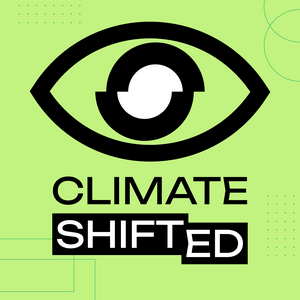Beyond Yell, Tell, Sell: Dr. Renee Lertzman on the Psychology of Climate Communication
In this episode of Climate Shifted, host Eva Frye speaks with Dr. Renee Lertzman, a pioneer in climate psychology who is transforming how we communicate about our planet's future. While most climate messaging bombards us with facts or terrifies us with doomsday scenarios, Renee's approach taps into something deeper: our human need to feel heard before we can change. Her groundbreaking work with Project Inside Out reveals why traditional "yelling, telling and selling" tactics fail so spectacularly with climate issues—they actually trigger defensiveness. Instead, Renee offers frameworks that help us become guides who create genuine dialogue rather than delivering monologues. Her approach is built on the same psychological techniques that help people overcome addiction—some of the most difficult behavior change imaginable. Whether you're an activist looking for new tools, a communicator hitting walls, or simply someone who cares and wants to share effectively, this conversation provides practical frameworks to transform how you engage with people about the climate crisis.
Transcript available here
Key Topics
Moving beyond "yell, tell, sell" approaches to climate communication
Using motivational interviewing techniques to create dialogue instead of defensiveness
The importance of acknowledging anxiety, ambivalence, and aspiration
Becoming a "guide" rather than an educator or cheerleader
Addressing polarization through empathetic listening
Creating sustainable activism campaigns that don't traumatize people
Using attunement and relational approaches even for urgent campaigns
Quotes
"Your job is to draw out from others what their concerns are, values, volition for change, and it's actually massively more impactful and effective than what I call yell, tell, and sell." - Renee Lertzman
"How to become a climate communication “guide”? The first step is to become very self-aware and with a lot of compassion, to go through a bit of an internal reflection on how am I showing up?" - Renee Lertzman
"It was crystal clear that we needed to be bridging these worlds of psychological insight with, what does it mean to actually come to terms with climate issues as well as how did we get here?" - Renee Lertzman
"It's very hard to do this work effectively unless you have a pretty high level of self-awareness." - Renee Lertzman
"A really good guide also is tuned in to how people are doing. And so, it's always a matter of balancing the 'take action now' with, 'I get it. Maybe this is upsetting to you, but we need to take action anyway.'" - Renee Lertzman
People & Organizations Mentioned
Dr. Renee Lertzman - Climate psychologist and strategic advisor
Project Inside Out - Resource platform for climate communication
Alliance for Climate Education - Organization that worked with Renee on a video about how to talk about climate change
Victor Frankl - Psychologist whose work Renee references
Dan Siegel - Neuropsychologist mentioned for "name it to tame it" concept
Barbara Ehrenreich - Author of "Nickel and Dimed"
Van Jones - Activist mentioned for his ability to bridge divides
Amy Edmondson - Harvard professor and expert on leadership development
JUICY BITS: Takeaways for Climate Communicators
Shift from educator to guide: Learn to create invitations for dialogue rather than lectures that trigger defensiveness.
Practice the three A's: Acknowledge anxiety, ambivalence, and aspiration in your audience to create deeper connection.
Use "Ask, Offer, Ask" (AOA): Start by asking about experience, offer information with permission, then ask for reflection.
Create reflective pauses: Help people find the space between stimulus and response where change can happen.
Practice "name it to tame it": Naming feelings reduces their charge and makes them more manageable.
Call to Action
Subscribe to Climate Shifted wherever you listen to podcasts
Follow @climateshifted on all social media platforms
Share this episode with friends interested in climate communication
Visit projectinsideout.net for resources on effective climate engagement
Follow Renee's work at reneelertzman.com and subscribe to her Substack "Becoming Guides"
Credits
Executive Producer & Host - Eva Frye
Technical Producer - Mateus Salgado
Adviser - Ryan Shuken
Audio engineer - Gianna Scioletti
Project management - Sarah Clayton

